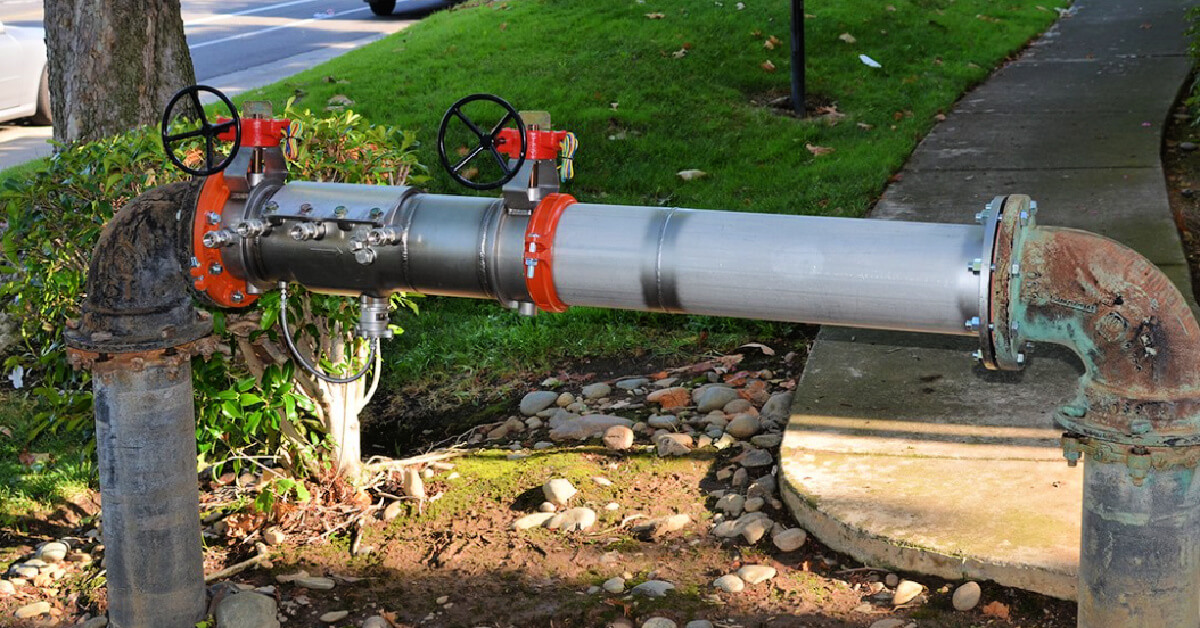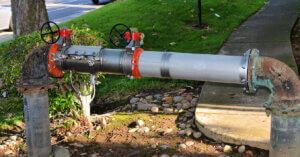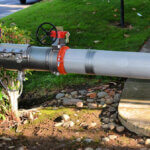Valves are essential components in a wide array of industrial, residential, and commercial systems, serving as regulators for media such as water, gases, and slurries.
The primary purpose of a valve is to regulate the flow of a fluid, gas, or liquid and pressure within a system, making them indispensable in industries ranging from water and sewage processing to chemical manufacturing and oil refining.
Valves open, close, or partially obstruct pathways to control flow start, duration, and end, providing precise operational control.
Valve selection and design depend on the intended function and the type of media it will regulate. There are different types of valves, such as ball, gate, butterfly, and check valves, each with unique mechanisms and benefits that make them more appropriate for specific tasks.
Materials of construction also play a critical role in the selection process, as the valve must withstand the temperature, pressure, and corrosive nature of the fluid it controls.
The compatibility of a valve with the requirements of the application, which ensures safety, efficiency, and reliability, is what ultimately determines its effectiveness.
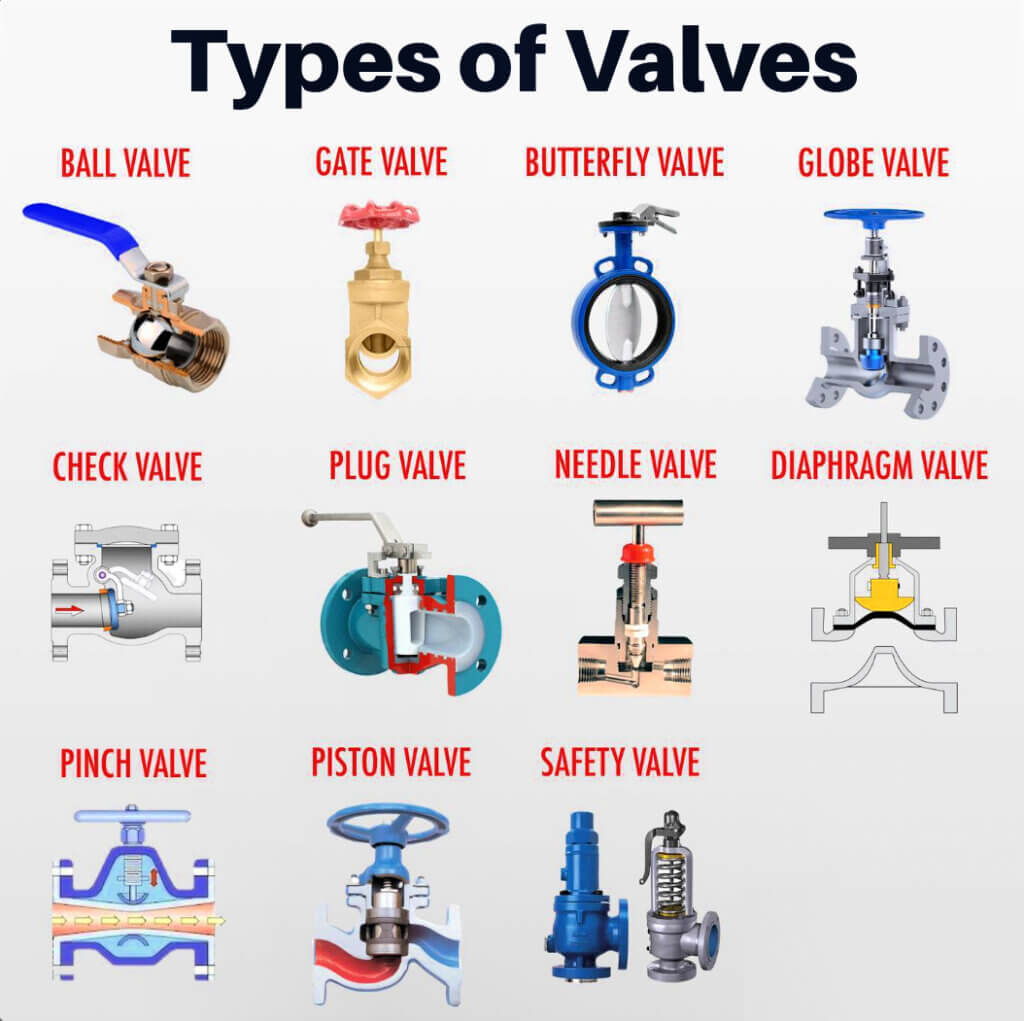
Key Takeaways:
-
- Valves regulate flow and pressure in systems, which is crucial for various applications.
-
- Different valve types offer unique benefits based on their design and operation.
-
- Selecting the correct valve requires consideration of media properties and system demands.
Valve Types and Functions
Valves are integral to our control systems, managing the flow and pressure within pipelines to ensure smooth and safe operations.
Let’s explore the main types of valves and their functions to understand their roles in various systems.
Control Valves
Control valves precisely regulate flow and pressure in piping systems.
We use ball valves for their tight shutoff capabilities, which are suitable for both on/off and control applications owing to their spherical closure element.
Butterfly valves, recognized by their disc-shaped rotors, offer control overflow with a simple turn mechanism. These allow for quick and light regulation, making them optimal for large-volume and low-pressure applications.
-
- Ball Valve: A ball with a hole through it, rotatable to align with the flow or block it.
-
- Butterfly Valve: A disc mounted on a rotating shaft to start, stop, or throttle flow.
Manual Valves
Manual valves are engaged by hand to commence or stop water flow.
Gate valves control the flow of water by raising or lowering a gate. They are efficient in allowing for straight-line fluid flow with minimal restriction.
Plug valves, incorporating a cylindrical or tapered plug with a hole in the center, can also be manually adjusted, providing an on/off or throttling function.
-
- Gate Valve: A gate moves up or down to control flow, ideal for on/off control.
-
- Plug Valve: A plug with a passage rotates inside the valve body to control flow.
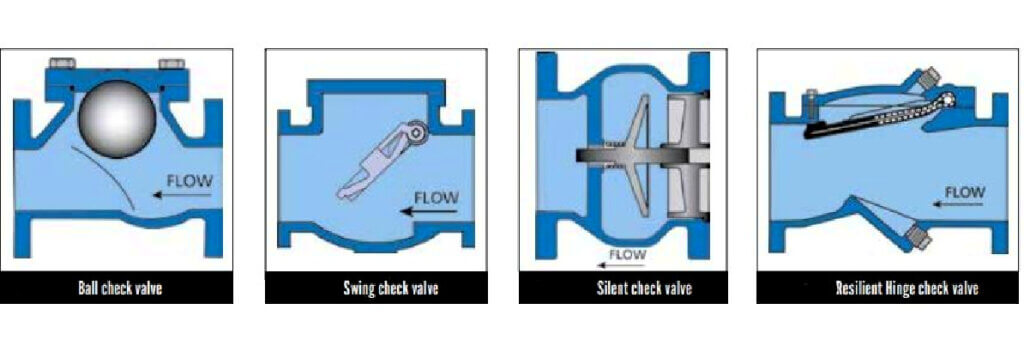
All About Check Valves
What is a Check Valve?
Check valves allow fluid (liquid or gas) to flow through them but in only one direction. They are used in many applications including water pumping systems to prevent backflow that can damage equipment or contaminate a water supply.
While check valves do provide a basic level of backflow prevention, they are not considered suitable as standalone backflow prevention devices for several reasons, particularly in applications critical to public health, such as for the application of protecting drinking water supplies.
Limitations of Check Valves for Backflow Prevention
-
- Lack of Fail-safes: Check valves function simply by allowing flow in one direction and blocking it in the reverse. If the check valve fails (e.g., debris prevent the valve from fully closing), there is no additional mechanism to prevent backflow.
-
- Susceptibility to Water Hammer: Check valves that close rapidly can lead to water hammer. If pressurized water in motion is forced to stop or change direction suddenly, a pressure surge is generated, which can damage the valve, plumbing, or other equipment.
-
- Maintenance and Inspection Challenges: Check valves can be challenging to inspect and maintain because they do not include test ports. With time, wear, debris, or damage can prevent the valve from closing fully. This problem may not be evident unless the valve is removed from the system.
-
- Limited Backflow Prevention Capability: Note that check valves only provide backflow prevention against backpressure—they do not guard against back-siphoning. Back-siphoning can occur when there is negative pressure in the supply line(s) and can lead to contamination of a clean water supply.
- Limited Backflow Prevention Capability: Note that check valves only provide backflow prevention against backpressure—they do not guard against back-siphoning. Back-siphoning can occur when there is negative pressure in the supply line(s) and can lead to contamination of a clean water supply.
Comparison with Dedicated Backflow Preventers: Dedicated backflow preventers, such as Reduced Pressure Zone (RPZ) assemblies and Double Check Valve assemblies (DCVA), offer greater and more reliable protection against backpressure as well as back-siphonage. These devices include features such as:
-
- Multiple Check Valves: These provide redundancy in the event that one valve cannot close.
-
- Relief Valves: Since some check valves must be subject to a minimum pressure difference to close, an overpressure event (e.g., in the main distribution piping) can prevent the check valve from closing properly. RPZ assemblies or DCVA include a relief valve, which opens to discharge backflow, if the check valves do not close and prevent contaminated water from reaching the clean water supply.
-
- Test Ports: These allow for regular testing and maintenance, so that the device’s operation under backflow conditions can be verified.
- Test Ports: These allow for regular testing and maintenance, so that the device’s operation under backflow conditions can be verified.
Regulatory and Health Considerations: For applications critical to public health, such as drinking water protection, installations standards often specify dedicated backflow preventers—instead of relying simply on check valves.
These standards reflect the fact that check valves have significant limitations in providing the level of protection against all types of backflow required to protect the public health from potential contamination.
Conclusion: While necessary in many installations to prevent backflow, the limitations of check valves make them inadequate on their own as standalone backflow prevention devices in systems serving humans where there is potential threat to public health.
Check valves do not meet the high level of protection against backflow required by health and safety regulatory standards for drinking water.
Dedicated backflow preventers, with their additional features and fail-safes, are best to safeguard drinking water supplies and to comply with the requirements of health and safety regulations.
Types of Check Valves and How They Work
There are several types of check valves, each suited to different applications and flow conditions. Two common types are the ball check valve and the swing check valve.
Ball Check Valve:
This type of valve uses a ball on a seat within the valve to control flow. When fluid flows in the correct direction, it pushes the ball off the seat, allowing passage.
If the fluid attempts to flow back (reverse flow), the ball is pushed back onto the seat, effectively sealing the valve and preventing backflow.
Ball check valves, essential in domestic water systems, ensure one-way water flow to prevent contamination from entering the clean supply.
Ball check valves in systems such as sprinklers and water heaters use a ball to block reverse flow and safeguard clean water.
Ball check valves are ideal for slow-flow, silent operations; their simplicity and reliability are vital for home water safety and purity.
Swing Check Valve:
Swing check valves have a disc or a door (often called a flap) that swings on a hinge or a trunnion. During normal flow, the pressure of the fluid allows the disc to swing open, permitting flow.
When the flow stops or tries to reverse, the disc swings back into the closed position, blocking the flow.
Swing check valves benefit larger systems where a complete, unobstructed flow is necessary, such as sewage or storm water drainage systems.
Practical Applications and Importance of Check Valves
-
- Water treatment and sewage systems to prevent backflow contamination.
-
- Pumping systems to prevent backflow and protect equipment.
-
- Industrial processes where specific flow directions are crucial for safety and efficiency.
- Industrial processes where specific flow directions are crucial for safety and efficiency.
The automatic operation of check valves, requiring no external power or control, makes them invaluable for maintaining the integrity and safety of many fluid systems.
Fraser Valley Well Pump offers a wide range of services concerning well pumps in the Fraser Valley area. Our water well services includes well pump installations, repairs, submersible well pump replacements, water storage tanks, water treatment and filtration, water well inspections, and water testing services. Fraser Valley's Comprehensive Solution for Well Pump Services and Water Quality Assurance!
Safety Valves
Safety valves are pivotal in industrial safety, primarily designed to vent excess pressure and avert potential system malfunctions.
A safety valve is an example of a valve that releases pressure automatically when it exceeds a set limit.
In addition to pressure relief valves, needle valves can function as safety devices by precisely regulating flow and pressure.
-
- Pressure Relief Valves: Automatically open to release excess pressure and close when normal conditions are restored.
-
- Needle Valve: Allows for precise regulation and can protect systems by controlling flow rates.
- Needle Valve: Allows for precise regulation and can protect systems by controlling flow rates.
Valve Design and Components
This section focuses on the integral components of a valve, each playing a critical role in its function and design.
From the ports that facilitate flow to the intricate trim that ensures precise operation, understanding these elements is crucial in recognizing the complexities of valve design.
Valve Body and Ports
The body is the main structure of the valve, housing the internal components that come into contact with the process fluid.
It is typical for the material of choice for the housing of a safety valve to be brass, stainless steel, or other metals, as it must withstand the system’s total pressure.
Ports are passageways within the valve body that direct the flow of fluid. For instance, in ball valves, the port is typically a hole through the ball itself that aligns with the valve body openings when in the open state.
Actuators and Positioners
An actuator mechanically operates a valve from a remote location. It can be a motor, controlled electronically, or a simple handle for manual operation.
Positioners ensure the accuracy of the valve’s response to the control signal. They take the input from the control system and use it to position the valve correctly, ensuring the desired flow.
Valves: Seals and Discs
Valve body seals are utilized to prevent any fluid leakage. Materials used must be compatible with system fluid and conditions. In some valves, like a poppet valve, a disc or plug presses against the seat to create a seal, which controls fluid flow through the valve.
Valve Trim
The trim consists of the movable parts within a valve that come into direct contact with the fluid, such as the stem, disc, seat, and sleeve.
The design of the trim impacts the flow characteristics and reliability of the valve. The trim material selection is crucial, as it must resist the wear and tear from the operation and the corrosive or erosive effects of the fluid it regulates.
Valve Operation
Valves are integral components across various industries, and their operation can be manually controlled or automated. We will explore these two primary methods in detail, examining the specifics of their mechanisms and applications.
Valves: Manual Operation
Manual valves are operated by hand using mechanisms like wheels, levers, or handles, suited for applications where human precision is favored, or automation offers no substantial advantage.
The design of manual actuation mechanisms is influenced by the valve’s size and the required operating force.
For instance, larger valves may feature a wheel to give the operator the mechanical leverage needed for effective operation.
This strategy guarantees that manual valves are practical and efficient for flow control across different environments, providing simplicity and dependability in situations where automation may need to be revised.
-
- Quarter-turn Valves: Commonly operated manually, requiring a simple 90-degree turn to open or close.
-
- Linear Motion Valves: This valve category includes gate or globe valves, where the manual control moves the valve stem and gate in a linear direction to regulate flow.
- Linear Motion Valves: This valve category includes gate or globe valves, where the manual control moves the valve stem and gate in a linear direction to regulate flow.
Manual operation allows direct control of the valve and immediate response to changes in system conditions.
Automated Valve Control
Automation in valve operation offers significant efficiency, precision, and the ability to control the valves remotely.
Actuated valves are vital to process systems, allowing flow control using various mechanisms such as electric motors, pneumatic and hydraulic systems, and solenoids.
The actuated valve selection depends on system requirements, such as manual or automatic operation and the controlled medium type.
Electric actuators are precise and easy to integrate into digital control systems. In contrast, pneumatic and hydraulic actuators are sturdy and capable of generating high forces in challenging environments.
Solenoid valves are ideal for on/off control tasks due to their rapid response times. Engineers must understand the working principles and types of actuated valves to ensure that process systems function efficiently.
There are many resources available that provide valuable insights into these mechanisms and their applications across various industries.
We see automated control in high-precision applications or large-scale operations where manual control would be impractical due to size, inaccessibility, or rapid response.
Electric Actuated Valves:
Utilize motors to achieve rotary or linear valve motion.
Pneumatic and Hydraulic Systems:
Use air or fluid pressure for valve actuation, often suited for environments where electricity use is restricted or could pose a danger.
Automated Valve Adjustment
Automated valves adjust to flow rates and pressures, utilizing sensors and control systems to adapt in real-time.
This capability ensures consistent and reliable performance within intricate industrial settings.
By integrating advanced technology, these valves optimize operations, enhancing efficiency and safety by responding dynamically to the changing conditions of the process environment.
Valve automation plays a crucial role in maintaining the precision and stability of fluid management across various applications, making them indispensable in modern industrial operations.
Material Selection for Valve Construction
Choosing the right valve components is crucial for various applications. The material selection directly impacts the valve’s efficiency, performance, and lifespan.
Essential considerations include the valve material, ranging from copper to carbon steel, and ensuring the size and type align with the intended use.
For general service valves, selecting standard materials is critical to their operation.
Additionally, materials can be tailored for specialized applications, as demonstrated by the customizable construction of an iris valve.
Manufacturers and users must understand how valve components work together to ensure optimal performance and reliability in their operational environment.
Valve Selection Process
The selection process for valve construction materials includes the following criteria:
-
- Metals: Common metals used in valve construction include bronze, cast iron, and steel. Bronze offers excellent resistance to seawater corrosion, making it suitable for marine applications.
Cast iron, known for its good fluid flow characteristics, often serves in water and steam applications. Steel, particularly carbon steel, is favored for its high strength and versatility, making it a common choice for various industrial applications.
- Metals: Common metals used in valve construction include bronze, cast iron, and steel. Bronze offers excellent resistance to seawater corrosion, making it suitable for marine applications.
-
- Non-Metals: For corrosive environments or less strenuous applications, non-metallic options such as PVC (polyvinyl chloride) provide good resistance to various chemicals at a lower cost.
PVC valves are standard in most residential water systems and small commercial applications.
- Non-Metals: For corrosive environments or less strenuous applications, non-metallic options such as PVC (polyvinyl chloride) provide good resistance to various chemicals at a lower cost.
Valve Construction Techniques
The construction of a valve determines its ability to function over time, withstanding the stresses of its operational environment. Our standard construction techniques include:
-
- Casting: Casting is a popular method for manufacturing bronze, cast iron, and steel valve bodies. It entails pouring molten metal into a mold shaped as the desired product and letting it solidify, resulting in a robust and durable item.
-
- Machining: Precision machining is essential after casting to create detailed features and ensure a smooth finish. It is vital for creating reliable valves with sealing surfaces and threaded connections.
- Machining: Precision machining is essential after casting to create detailed features and ensure a smooth finish. It is vital for creating reliable valves with sealing surfaces and threaded connections.
Valve Selection and Application
Choosing valves involves matching them directly to the system’s requirements, including the type of fluid or gas, operating conditions, flow rates, and pressure specifications.
Valve Types:
-
- Ball Valves: Suitable for quick shutoff with tight sealing properties.
-
- Butterfly Valves: Ideal for flow regulation in large pipe diameters.
-
- Diaphragm Valves: Chosen for their leak-proof service in corrosive fluid handling.
-
- Gate Valves: Best for on/off control in pipelines.
-
- Globe Valves: Precise throttling and control capabilities.
- Globe Valves: Precise throttling and control capabilities.
Factors in Valve Selection:
-
- Flow Control: The valve must provide accurate flow control through the system.
-
- Pressure Relief: The inclusion of a pressure relief valve ensures the system is protected from overpressure conditions.
-
- Pressure Rating: The valve’s pressure rating must correspond to the system’s maximum pressure to guarantee safe operation.
-
- Valve Costs: Valves should be cost-effective while meeting performance requirements.
- Valve Costs: Valves should be cost-effective while meeting performance requirements.
Valve Selection Procedure:
-
- Define system requirements (media type, flow rate, pressure).
-
- Determine the valve type based on the required function (e.g., flow control, on/off).
-
- Identify the necessary pressure rating and size for the valve.
-
- Evaluate potential cost implications.
- Evaluate potential cost implications.
Choosing the correct valve ensures the system’s functionality, reliability, and longevity. We assess the pros and cons of each valve and adjust our selection to match the overarching needs of the application.
Valves Frequently Asked Questions:
In this section, we cover common inquiries about the function and selection of valves across various contexts, from industrial applications to biological systems.
Different types of automatic control valves and their uses?
Automatic control valves are essential in regulating flow rates and pressure in fluid systems.
Some key types include ball valves, which provide tight shutoff; butterfly valves, used for regulating flow; gate valves, ideal for on/off control; globe valves, which are suitable for throttling; and check valves, which prevent backflow.
Different types serve specific purposes, such as maintaining flow rate, managing direction, and ensuring pipeline safety.
Key factors when selecting a valve for an engineering application?
Selecting the appropriate valve for an engineering application depends on various crucial factors.
Fluid characteristics such as viscosity and corrosivity, working pressure and temperature ranges, flow control requirements, pipe size, and environmental conditions are considered. These determine the valve’s material, design, and operational modality to ensure reliability and efficiency.
Methods for identifying and classifying valves in industrial settings?
Valves in industrial settings are classified based on their purpose, blueprint, and operational characteristics. Names like “gate,” “globe,” “check,” “ball,” and “butterfly” reflect the operational mechanism of each valve.
For consistency in specification and to ensure process and safety compatibility, we adopt standardized terminology and codes, including those issued by the American Petroleum Institute (API).
Advanced Valve Considerations
The longevity and reliability of valves depend significantly on regular maintenance and an understanding of their lifecycle. Regular checks and maintenance can prevent operational failures and extend the valve’s service life.
Valve Innovations and Technological Advancements
The valve industry has seen remarkable innovations, including smart valves with integrated sensors for real-time monitoring, enhancing operational efficiency and predictive maintenance capabilities.
Valve Environmental and Safety Implications
Selecting the appropriate valve is essential for safeguarding the environment and ensuring safety. Valve selection involves managing flow and pressure to avoid leaks and overpressure that could result in accidents.
By opting for valves crafted with advanced materials and designs that reduce leaks and emissions, the industry showcases its commitment to environmental protection and safety.
Choosing the correct valve, which entails considering the fluid type, pressure, and temperature, is crucial in maintaining environmental care and safety.
Practical Valve Insights
Valve Installation and Integration
Integrating valves into existing systems demands meticulous planning for compatibility and peak performance. This guide will provide insights into achieving seamless integration.
Valve Standards and Certification
Valves must often meet specific industry standards and certifications to ensure safety and performance. An overview of critical standards and the importance of compliance would provide valuable information for industry professionals.
Looking Ahead: Valves Future Trends
The future trends in valve technology are marked by significant strides toward digitalization and automation, highlighting the development of digital valves and systems that offer improved speed, precision, and adaptability.
Innovations focus on digital valves with enhanced response times and flow measurement capabilities, software-defined pneumatic systems allowing on-the-fly adjustments, and advanced control strategies employing digital valve controllers.
Moreover, research on digital hydraulic and electrorheological (ER) valves suggests a move towards more compact, efficient, and versatile designs.
These advancements indicate a shift towards more intelligent, more efficient valve systems that can adapt to various industrial needs, promising increased performance, flexibility, and energy efficiency in fluid control and automation systems.
Conclusion
Valves are more than mere components; they are the backbone of efficient and safe fluid management in countless applications.
Understanding the types, functions, and considerations for selecting and maintaining valves is crucial for industry professionals.
As technology advances, staying abreast of innovations and trends will be vital to leveraging valves to their full potential, ensuring operational excellence and environmental stewardship.
This guide explores the importance, applications, and future of valves.
Whether you’re an industry veteran or new to the field, embracing these insights can enhance your operational practices and contribute to sustainable advancements in the valve industry.


